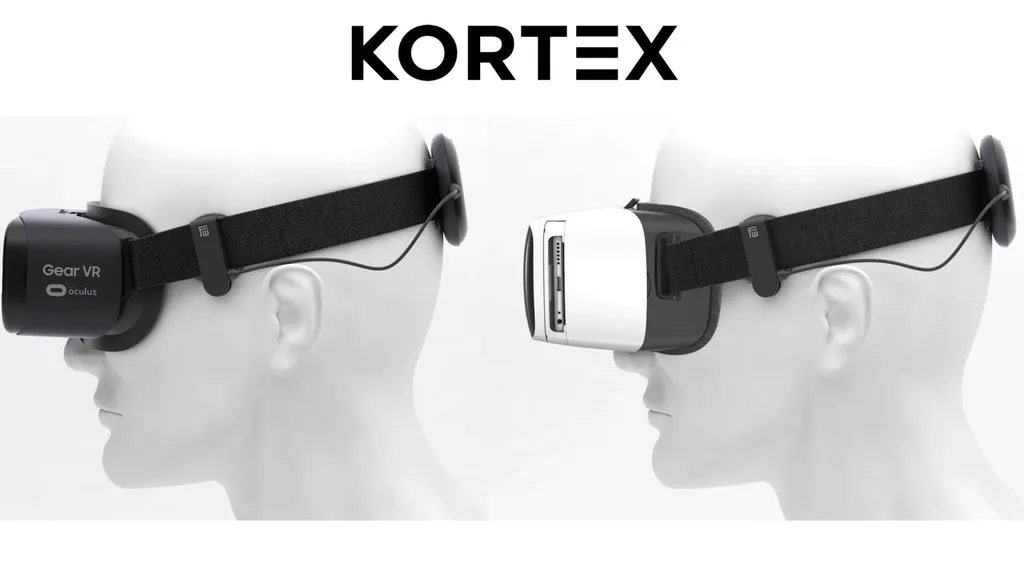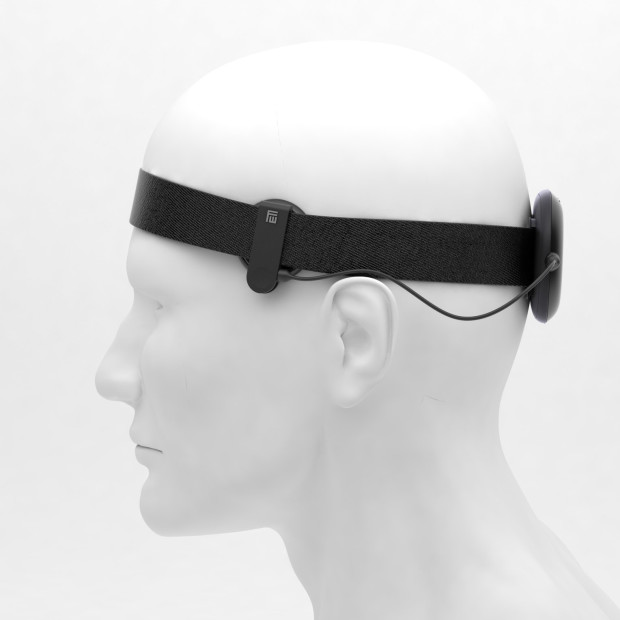There are a handful of apps in the VR software ecosystem that serve as escapist experiences by whisking the user away into calm environments like serene forests or a private island. The interactive elements in some of these are minimal, instead getting the user to embrace a sort of virtual trance inspired by the sights and sounds of these places.
Fisher Wallace Labs, a company known for their stimulator that is used to combat insomnia and depression, is taking the isolated nature of VR and magnifying it to become a tool for stress and sleep management. Created in conjunction with Arrow Electronics, Fisher Wallace Lab’s Kortex device is strapped to the rear of a user’s head where the device stimulates the brain in order to produce serotonin and melatonin while reducing cortisol. The combination of actions increases the potential for a calming sensation and rest while countering stress. It can be used by itself or in conjunction with any VR headset. This all sounds wonderful in theory, but what do the studies say?
We reached out to Fisher Wallace via email and discussed some results of using Kortex with Fisher Wallace Labs co-founder Kelly Roman.
“In 2009, we performed a 392-subject study with the Fisher Wallace Stimulator at Phoenix House, the nation’s largest non-profit drug rehab center,” Roman says. “Heroin and cocaine addicts reported improved sleep as a result of using our device, and we increased 90-day rehab retention by 50% versus standard rehab. This is one reason why the Fisher Wallace Stimulator was approved by Medicaid in Maine last year to treat opioid addiction patients – the first state Medicaid to approve us.”
That approval means Medicaid patients in Maine can get the Fisher Wallace Stimulator at no cost to them. There’s a 100-subject, double-blind, placebo-controlled insomnia study currently underway at the University of Texas but the data already received from the stimulator is beneficial right now because Kortex clones it technologically. “By combining our neurostimulation with VR that’s geared to relaxing patients, we expect to see even better results – much more to come,” Roman says.
If you want to read up a bit more on the free game included with Kortex, Land’s End, you’ll see it found a home on our list of the best nine games for the Samsung Gear VR back in November of last year. When asked if the Kortex could have proprietary VR content designed for it, Roman told us they’re planning to build an engagement app modeled after the same apps used in clinical trials that will help users stay motivated and retained with reminders and goals.
“I think there is a huge opportunity on the content side – not just for relaxing or meditative VR, but also for prescription VR therapy, telepsychiatry and physical therapy, and performance/learning/training software,” Roman adds.
“There may be times that you don’t have a VR headset, or just want to use Kortex with your eyes closed on the plane, etc – those use cases are the same we have for the Fisher Wallace Stimulator. But Kortex was designed for VR because VR content is a powerful and complimentary tool,” Roman explains. “I see a very near future in which many baby boomers and other demographics will primarily use VR only for the healthcare value – who will never play an action game. Kortex is synonymous with VR healthcare. Right now, Kortex gives VR healthcare the scientific legs it needs to start sprinting.
The Fisher Wallace team recently added MIT engineers to their team specifically to complete the design package and everything looks to be on track for a late July release with the slightest potential to bleed into August. Head over to the IndieGoGo page if you want to get your hands on Kortex, currently priced at $349, at launch.



























